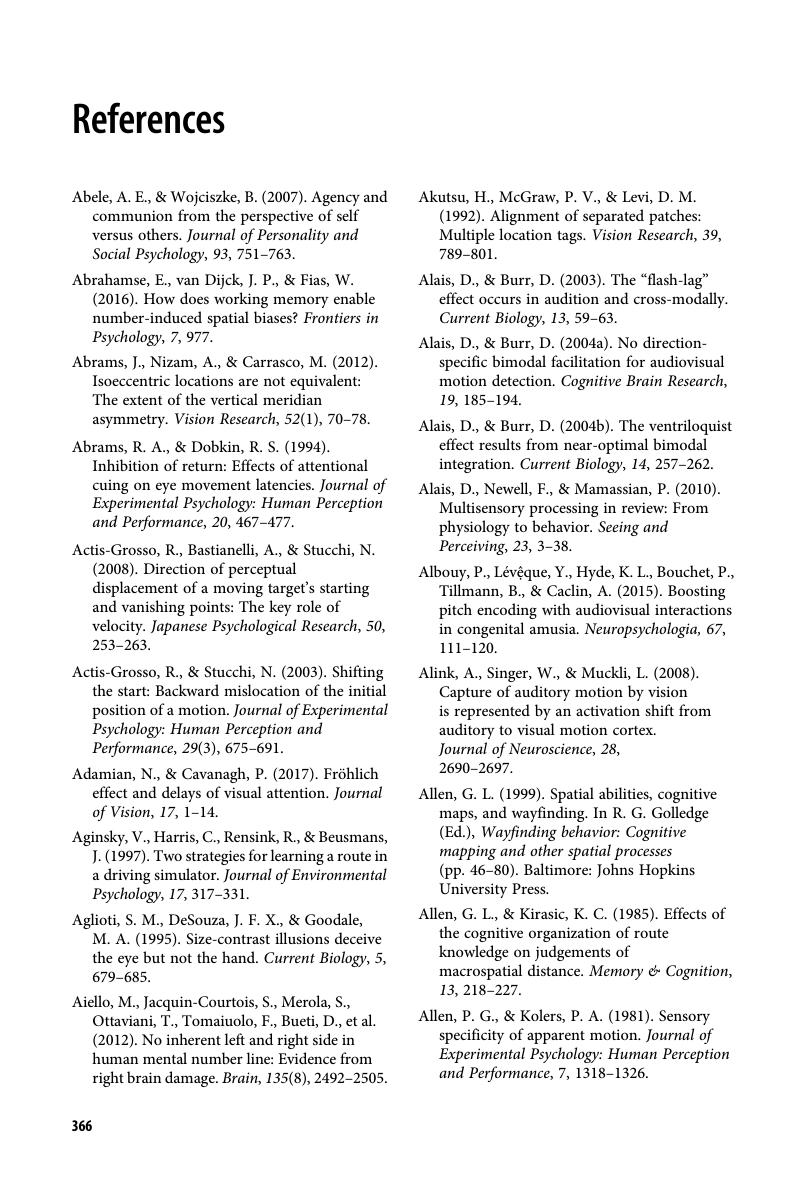Book contents
- Spatial Biases in Perception and Cognition
- Spatial Biases in Perception and Cognition
- Copyright page
- Contents
- Figures
- Tables
- Contributors
- Introduction
- Part I Anisotropies and Illusions
- Part II Dynamics of Objects
- Part III Dynamics in Scenes
- Part IV Perception and Action
- References
- Index
- Plate Section (PDF Only)
- References
References
Published online by Cambridge University Press: 04 August 2018
- Spatial Biases in Perception and Cognition
- Spatial Biases in Perception and Cognition
- Copyright page
- Contents
- Figures
- Tables
- Contributors
- Introduction
- Part I Anisotropies and Illusions
- Part II Dynamics of Objects
- Part III Dynamics in Scenes
- Part IV Perception and Action
- References
- Index
- Plate Section (PDF Only)
- References
Summary

Information
- Type
- Chapter
- Information
- Spatial Biases in Perception and Cognition , pp. 366 - 472Publisher: Cambridge University PressPrint publication year: 2018
